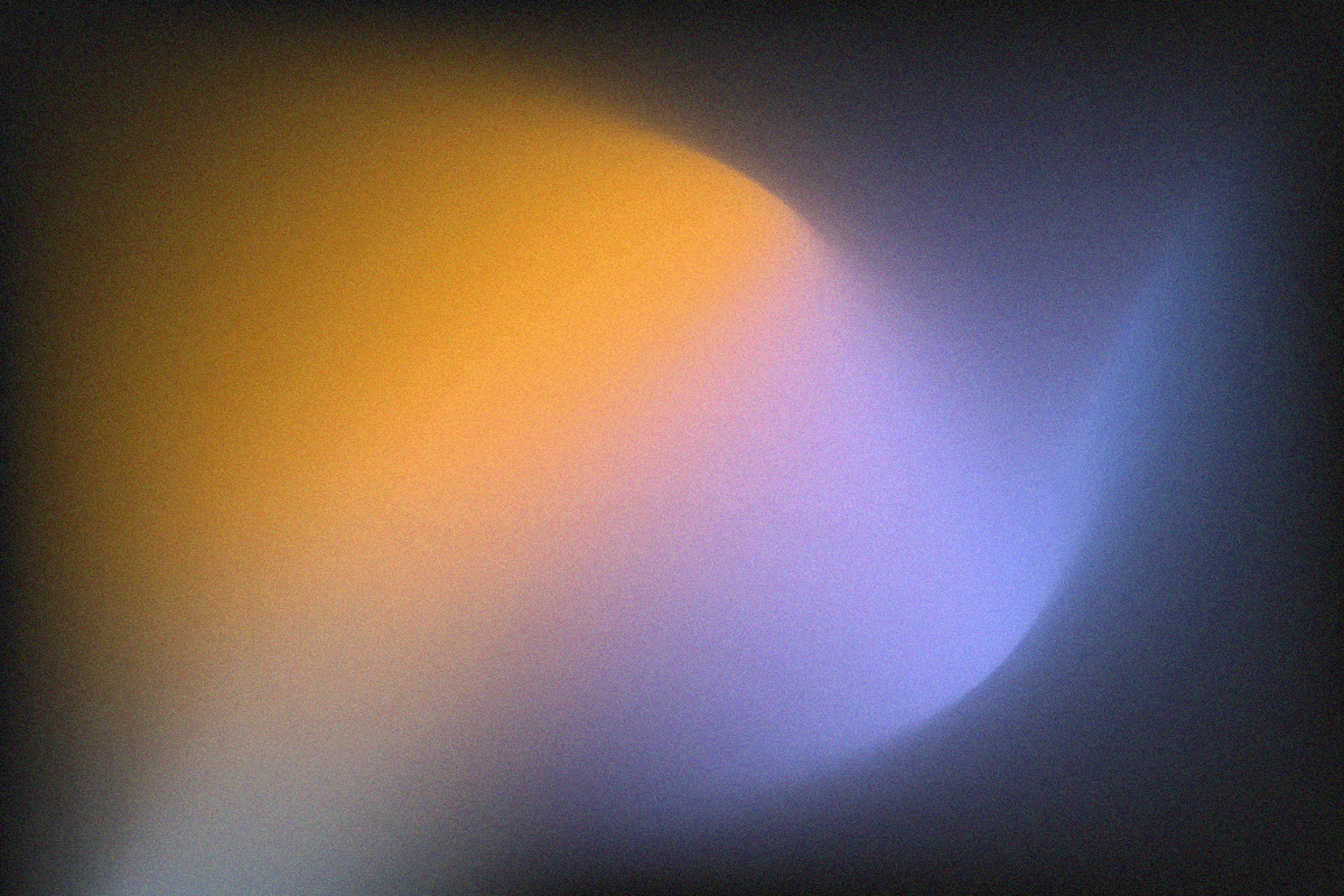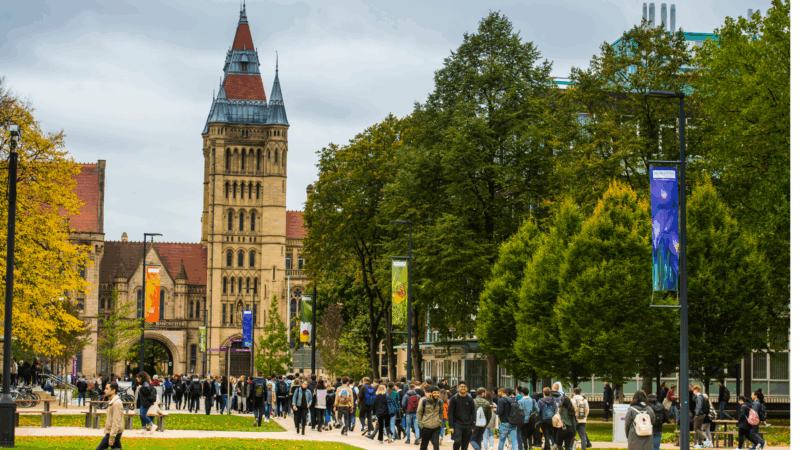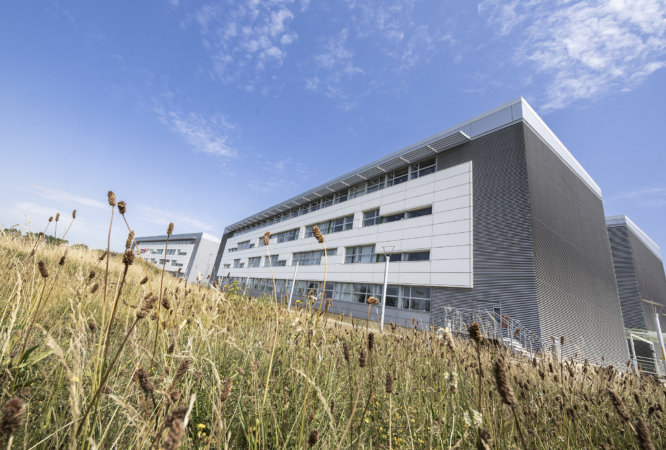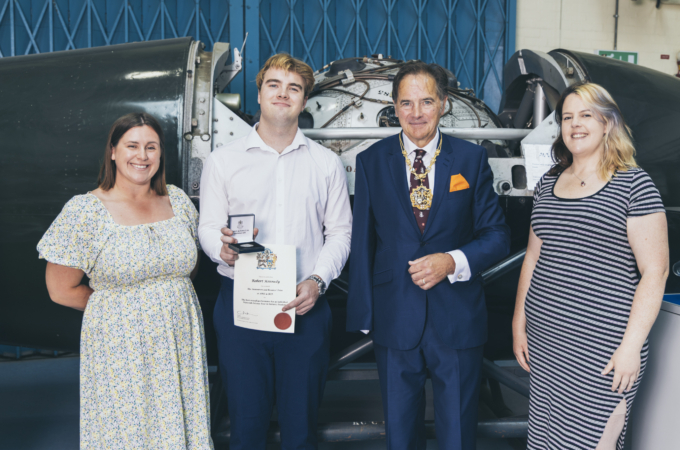Bringing Magnetic Field Interactions down to Earth
New research published in Nature Comms sheds light on a fundamental phenomenon in plasma physics
The Universe is full of spectacular events where flowing plasmas – collections of charged ions and electrons – collide, releasing energy as magnetic fields reconfigure and reconnect. In some instances, this causes ions to accelerate to high energy. Close to home, related processes power displays of aurora in the polar regions, and may accelerate ions in the Sun’s outer atmosphere or corona which can then disrupt satellite operations.
While important and universal, the role of the magnetic fields and how they reconfigure and reconnect in a plasma is not well understood. These violent events occur naturally around the Earth, but are difficult to observed directly as the important scales are small. Experiments can replicate the extreme plasma environments and observe the outcome of a reconnection event, but few have touched on the underlying mechanisms as the magnetic fields move in complex ways in all three dimensions, making measurements challenging.
In a new paper published in Nature Communications, researchers from the United Kingdom and United States set out to observe exactly how a magnetic field reconfigures during a plasma collision. Using state-of-the-art facilities at the Orion High Power Laser at AWE, they were able to replicate the extreme plasma environments and use multi-angle proton probing to measure in detail the magnetic field strength and position.
“Our primary objective was to map the magnetic and electric fields in three-dimensions, and Orion’s combination of precision long and short pulsed lasers made it uniquely suitable for this type of experiment” says Nigel Woolsey, Professor in the Physics department at the University of York, and an author on the paper.
Using two nanosecond long laser pulses from Orion the team formed two hot and rapidly expanding plasma bubbles each with a strong anti-clockwise magnetic field. These bubbles rapidly push the magnetic fields outwards, potentially trapping the magnetic field as they collide. In space between them, the magnetic fields point in opposite directions and, within nanoseconds, magnetic reconfiguration and reconnection can occur.
Professor Woolsey adds, “Our task was figure out what was going on during the collision. Proton probing is a wonderful technique for measuring the electric and magnetic fields, all we needed was to this measuring in multiple directions and distinguish between the electric and magnetic fields. Orion is one of the few lasers in the world that is sufficiently powerful to enable this measurement. We used two picosecond short-pulse beams to generate protons for probing, and observed deflections of these protons as they go through the experiment from two directions and then with some sophisticated techniques distinguish and map the magnetic field from the electric.”
Multiple snapshots of the event were taken, allowing the researchers to learn how the magnetic fields evolve as the two plasma bubbles collide.
“The precision of the measurements allowed by Orion enabled us to look more carefully at this phenomenon. The design of the Orion facility, its reliability and reproducibility are impressive and enables precision experiments like this. The controlled changes between shots are essential for comparison for building up an accurate picture of the physics, “says Colin Danson, Orion Academic Access Coordinator at AWE. “Older lasers are less reliable, and sometimes changes in conditions between shots are sufficiently large that making detailed conclusions was next to impossible.”
The researchers were particularly surprised that an expected increase in magnetic strength did not occur. Instead, as the plasma bubbles pushed together, the magnetic field strength ‘flattened’, suggesting plasma flow changes with direction. This ‘anisotropic pressure’ appears to be more universal than previously thought –
“It was clear that the data we observed did not fit the theory we had access to, and we noticed that the role of the pressure anisotropy was important. Anisotropy is known to be a factor in collisionless plasma, such as those found in space, but we were surprised to find that it also played a role in dense plasma too, such as the plasma we created at Orion” explained Dr Ellie Tubman, Postdoctoral Researcher at the Lawrence Livermore National Laboratory and lead author of the paper.
Dr Tubman adds “Experimental and theoretical research often go hand in hand. We have taken great care in interpreting our measurements and in using these to inform our simulations, this demonstrates the need to ensure our simulations evolve to include the new physics to describe the phenomena we probe. You can never know if we’re completely right, but at least we now know we’re closer to the truth”.
Their results demonstrate how laboratory measurements with precision lasers such as Orion are instrumental in improving our understanding of plasma theory, enhancing existing models of magnetic effects, and enabling deeper investigation into our Universe.
Tubman, E.R., Joglekar, A.S., Bott, A.F.A. et al. Observations of pressure anisotropy effects within semi-collisional magnetized plasma bubbles. Nature Communications 12, 334 (2021). https://doi.org/10.1038/s41467-020-20387-7
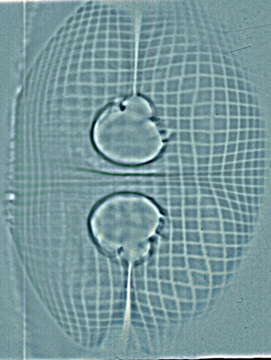
A proton radiograph of two plasma bubbles colliding. Magnetic fields are inferred by mapping the distortion of the uniform grid which was imprinted upon the imaging beam before passing through the experiment.
